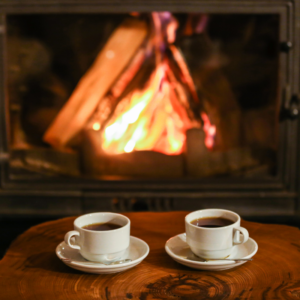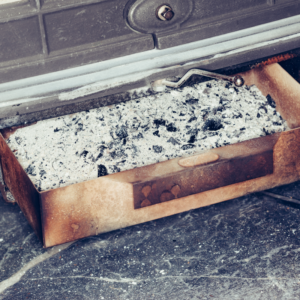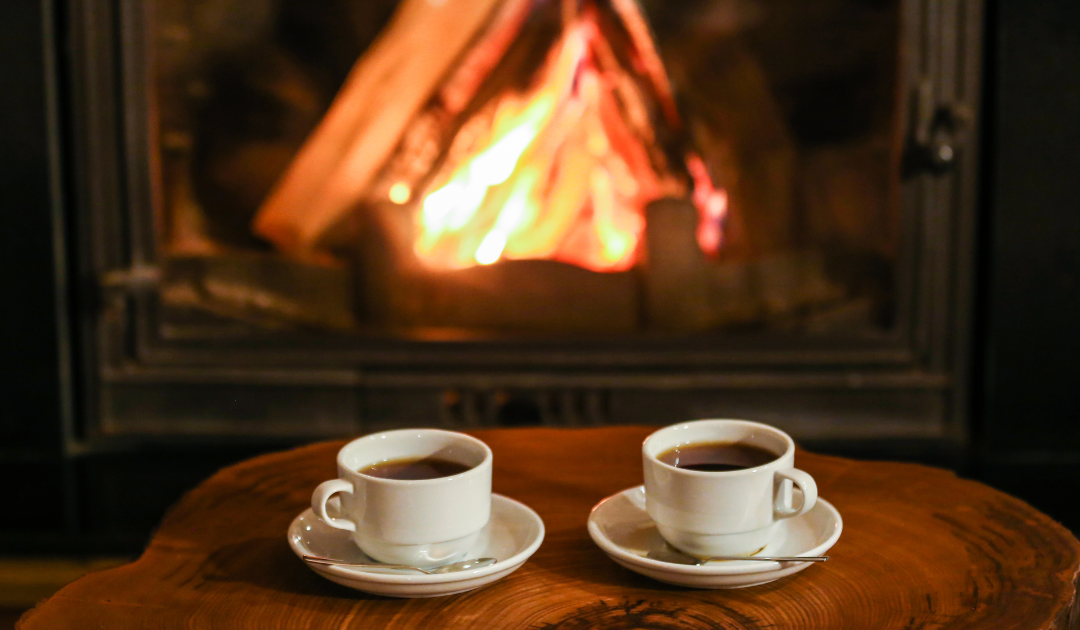Wood-burning appliances have been a popular way to heat homes for centuries, and in the modern era they continue to be popular for the coziness and aesthetic factors they offer. While there are alternatives available, such as gas and electric systems, many prefer the traditional warmth and ambiance that comes with a wood-burning system.
We get it – they’re definitely an asset to your home! However, as with any heating system, there are pros and cons to consider before choosing what kind of stove or fireplace to install.
What Are the Pros of Wood-Burning Systems?
 Cost-effectiveness. Wood-burning systems are often less expensive to operate than gas or electric fireplaces, stoves, or inserts. This is especially the case if you have a readily available supply source of firewood.
Cost-effectiveness. Wood-burning systems are often less expensive to operate than gas or electric fireplaces, stoves, or inserts. This is especially the case if you have a readily available supply source of firewood.- Eco-friendliness. Wood is considered a renewable energy source, as long as it’s sourced sustainably. Newer wood-burning models are engineered for efficiency and reduced environmental impact.
- Delightful radiant heat. Wood-burning systems provide the steady, cozy, warmth you desire for your living space in the middle of winter.
- Backup heat source. On a related note, if you lose power a wood-burning system can provide robust radiant heat that will maintain the comfort of your home if your main heating system experiences a failure.
- Atmosphere and ambiance. The inviting crackle and pop, earthy aroma, and flickering glow of a wood fire work together to create a wonderful sense of atmosphere and experience.
- Home value. Wood-burning fireplaces and inserts create a focal point and can add value to a home, making it an attractive option for homeowners looking to increase their property value or merely give your home the look you desire.
- Options. Increasingly, wood-burning systems come with a variety of features and design options that open up new possibilities for placement, style, and ease of use.
- The process. While some may give the effort expended in building, lighting, and maintaining your blaze a place on the “con” list, others consider this rhythm a relaxing part of the process of enjoying a wood-burning system.
- Mental health. Studies have shown significant mental health benefits to sitting in front of a fire, such as decreases in blood pressure, increased focus and concentration, and a desire to be with people.
What Are the Cons of Wood-Burning Systems?
- Maintenance needs. Wood-burning systems require more maintenance than gas or electric heating systems. Starting fires will take a bit more effort, and ash will need to be removed regularly.
- Acquiring fuel. Chopping, seasoning, and storing firewood takes effort and planning. If you aren’t chopping your own firewood, a supplier needs to be located and delivery and storage arranged.
- Fire hazards. A wood-burning system can pose a fire hazard if not used and maintained properly. You need to take precautions and ensure you know how to use your system safely.
 Smoke and ash. These are by-products of wood-fires that can be a nuisance if improperly managed. Properly maintained and operated, smoke should vent properly and not be an issue. Ash, however, will build up and must be disposed of. On the positive side, there are a number of helpful, household uses for cooled wood ash!
Smoke and ash. These are by-products of wood-fires that can be a nuisance if improperly managed. Properly maintained and operated, smoke should vent properly and not be an issue. Ash, however, will build up and must be disposed of. On the positive side, there are a number of helpful, household uses for cooled wood ash!- The time element. As you expend the effort involved in maintaining and fueling a wood-burning appliance, you’ll naturally be spending time as well. For this reason, some fireplace aficionados with busy lifestyles may want to opt for a less time-consuming option.
- Environmental impact. Again, newer models are engineered with efficiency in mind and wood is a renewable resource. Yet harvesting, transporting, and burning wood can still have a negative environmental impact.
Fireplaces vs. Inserts vs. Stoves
If you’ve settled on a wood-burning system, congrats! Next, you may be wondering about the different options available. There’s a delightful variety to suit your needs and preferences, but they can generally be organized into three categories.
A wood-burning fireplace probably comes readily to mind when you think of building a cozy fire in your home. These traditional, open fireplaces are usually built into a wall in your home and vent outdoors through a chimney. Wood fireplaces come in many designs, and while they aren’t the most efficient of wood-burning systems, they provide a cozy ambiance and authentic look that graces any room.
Wood-burning inserts are designed to be fitted into an existing fireplace. A wood insert consists of a firebox, an insulated glass door, and a blower. The door helps retain heat, and the blower aids in distributing said heat through your home. For this reason, wood-burning inserts are typically more efficient than traditional open fireplaces in heating a home while still giving you that homey look.
Wood-burning stoves are freestanding and usually made of cast-iron or steel. Because they’re freestanding, they allow more options for placement – whether in a traditional fireplace, in a corner, or elsewhere. They generate high heat output and are designed to heat large areas efficiently while still being beautifully designed.
Let Us Serve You
We’re a full-service company, offering a wide range of high quality products that our qualified, friendly technicians will install with use and comfort in mind and a high level of skill and attention to detail.
Whatever wood-burning system – or gas or electric, for that matter – that you want installed to add comfort and style to your home, give us a call. We’ll be happy to answer your questions and work to make your dreams a reality!


Recent Comments